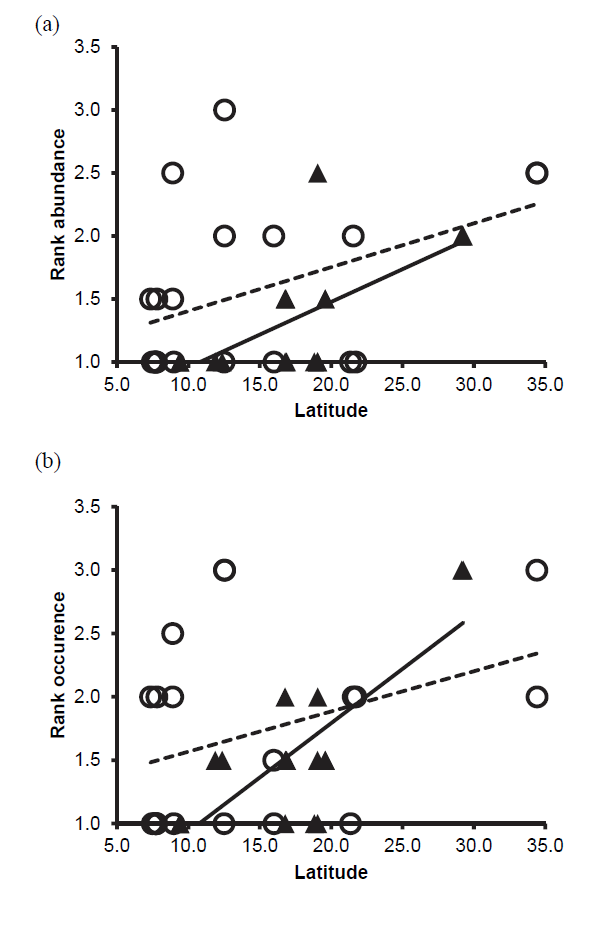
Ecological Archives E096-265-A3
Mark E. Torchin, Osamu Miura, and Ryan F. Hechinger. 2015. Parasite species richness and intensity of interspecific interactions increase with latitude in two wide-ranging hosts. Ecology 96:3033–3042. http://dx.doi.org/10.1890/15-0518.1
Appendix C. Crude estimates of (a) density (F1,34 = 11.6, P = 0.0017) and (b) occurrence (inverse of patchiness) (F1,34 = 15.6, P = 0.0004) characterizing the horn snail populations across latitudes.
Fig. C1. Crude estimates of (a) density (F1,34 = 11.6, P = 0.0017) and (b) occurrence (inverse of patchiness) (F1,34 = 15.6, P = 0.0004) characterizing the horn snail populations across latitudes. Density and occupancy data are averages of the independent qualitative observations of two of the authors (MET and OM) concerning the relative, ranked order of magnitude of density (where snails occurred) and occupancy (proportion of estuary inhabited) at each of the study sites. In addition to the overall main effect of latitude, there was a significant effect of ocean for estimated snail density (F1, 34 = 4.2, P = 0.047), but not for occurrence (F1, 34 = 2.8, P = 0.1), and no significant interaction between ocean and latitude for either (F1, 34 = 0.44, P = 0.51; F1, 34 = 1.1, P = 0.08). The dashed line and Ο symbols are for Pacific sites and Cerithideopsis californica and the solid line and ▲ symbols are for Atlantic sites and Cerithideopsis pliculosa.